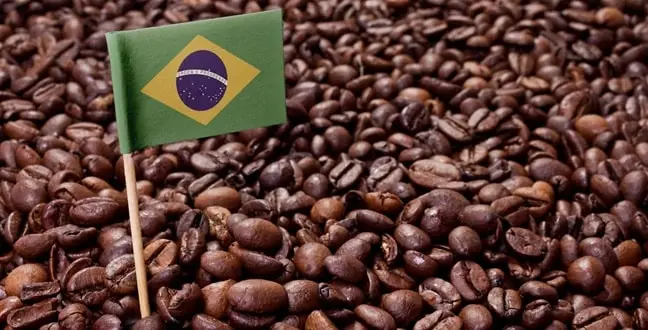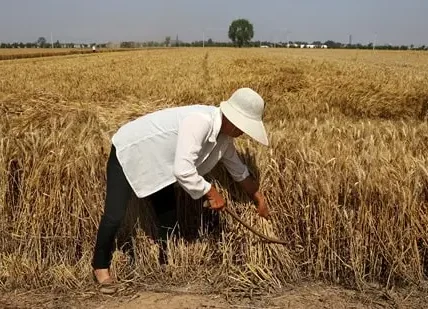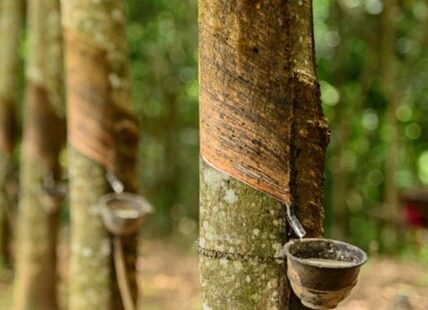The popularity of coffee has spread all over the world. It is a part of daily breakfast or evening drink now. Although it took a lot of time for coffee to come to the presentable form as it is today, its use covers a span of more than 300 years. Presently, in some countries, the use of coffee has become havoc, part of daily lifestyle. However, when it comes to coffee production, very few of the countries can come up with huge quantity. Starting from Brazil, the coffee production countries have come up with new surprises. Here we come up with the top 10 list of the largest coffee producing countries in the world.
Countries With Highest Coffee Production
1. Brazil – 3.0 Million Tons
Its excellent flavor and scent make Brazil the world’s top coffee producer popular. Massive coffee fields in Minas Gerais and Bahia enable it dominate the world. Longstanding Brazilian Arabica and Robusta coffee output affects worldwide coffee markets. The world’s largest coffee producer is Brazil, generating 50 million bags. The nation produced 27.4 bags per acre in 2022, up from 26.4 in 2021. Brazil might produce 60 million bags of coffee by 2022. Brazil exports plenty of coffee. 70% of coffee beans exported are Arabica. Brazilian coffee thrives on its capacity to produce huge volumes of high-quality beans for global markets. Brazil controls coffee and has unmatched influence. Brazil’s rich and aromatic coffee thrills coffee lovers worldwide owing to dedicated producers, beautiful weather, and innovative production methods.
- Also Read: 10 Countries With Highest Rice Production
2. Vietnam – 1.7 Million Tons
Second-largest coffee producer Vietnam produces Robusta beans. Due to excellent weather and hardworking growers, the coffee business has grown rapidly. Dak Lak province produces outstanding coffee in Vietnam’s middle highlands. Vietnam produces second-most coffee. Vietnam has traditionally preferred tea over coffee, yet 95% of its coffee is Robusta. It shows how coffee cultivation has changed Vietnam’s agriculture and worldwide markets. Vietnam’s coffee industry relies on roast coffee. Coffee sales grew to $5 billion in 2021. Vietnam’s coffee production and global coffee commerce are shown by this financial success.
3. Colombia – 885.1 Thousand Tons
Quality Colombian coffee is popular worldwide. Colombia’s Andes farms demonstrate their premium coffee promise. Colombian Arabica coffee is known for its mild flavor and balanced acidity. Colombia’s coffee production concentrates on Huila, Antioquia, and Nariño. Climate and geography make these areas some of the country’s greatest coffee. Connoisseurs admire exquisite Andean coffee beans. Colombia sells the most coffee in 2022. Over 1 million 60kg bags were joyously carried. Colombia’s strong export volume supports its worldwide coffee market leadership, where its beans are high-quality and contribute to coffee culture.
4. Indonesia – 761.0 Thousand Tons
Indonesia’s diversified geography makes it a coffee powerhouse. Most Indonesian coffee comes from Sumatra, Java, and Sulawesi, traded worldwide. Robusta beans and full-bodied, earthy Indonesian coffee are unique. Indonesian coffee is distinctive beyond flavor due to traditional wet-hulling. Because of this method, Indonesian coffee is rough and tasty. Java had its first coffee plantations in the 1600s. Indonesia started coffee production outside Arabia and Africa. Indonesia has long been a top 10 Arabica and Robusta grower, demonstrating its coffee dedication. Indonesia’s coffee market grew in 2022. The country delivered 640,000 bags of coffee, demonstrating its worldwide coffee supply chain commitment. This export volume shows Indonesia’s coffee leadership, whose numerous coffee varieties and rich history attract coffee lovers.
5. Ethiopia – 482.6 Thousand Tons
Ethiopia—the birthplace of coffee—has a rich coffee history. Arabica dominates the country’s coffee history. Ethiopian high-altitude coffee from Sidamo, Yirgacheffe, and Harrar has a unique taste. Ethiopian coffee is loved globally for its lively acidity, delicate floral undertones, and distinctive taste characteristics. The coffee’s journey from lush, elevated landscapes to coffee cups globally shows Ethiopia’s commitment to high-quality coffee. Ethiopian coffee ceremonies stress coffee’s role in daily life. Beyond preparing coffee, this routine symbolizes hospitality, companionship, and sharing. Ethiopian culture involves roasting and brewing coffee. Ethiopians celebrate coffee’s history and culture during the coffee ceremony. Over good coffee, the custom encourages camaraderie and discussions. This traditional practice promotes Ethiopian coffee and its use.
6. Honduras – 476.3 Thousand Tons
Central American centre Honduran coffee dominates the globe. Copan, Santa Barbara, and Ocotepeque produce most of Honduras’ coffee, making it a worldwide coffee producer. Honduran Arabica coffee has a balanced aroma with fruity and chocolate undertones that please coffee aficionados. Sustainability, organic, and environmental responsibility define Honduran coffee beyond flavor. This deliberate approach has propelled Honduras into the specialty coffee market, where discerning buyers appreciate its great taste and ethical and ecological manufacturing. Sustainable coffee production in Copan, Santa Barbara, and Ocotepeque has enhanced Honduras’ coffee reputation. Organic farming addresses global demand for ethically produced and environmentally sustainable commodities by eliminating synthetic pesticides and fertilizers. Honduran landscapes and ethical coffee users benefit from this environmental attention.
7. Peru – 363.3 Thousand Tons
With its Amazon jungle and Andes Mountains, Peru produces plenty of coffee. Arabica beans from Cajamarca and Amazonas are high-quality. Crisp acidity, interesting floral scents, and nuanced tastes make Peruvian coffee popular worldwide. Peru’s high altitudes and temperatures give Cajamarca and Amazonas Arabica beans a unique aroma. Altitude, soil composition, and meticulous cultivation make Peruvian coffee great. The cup’s fresh acidity, floral fragrances, and delicate flavors show the country’s commitment to high-quality beans. Smallholders are crucial to Peru’s coffee business. These dedicated producers on tiny farms make Peruvian coffee unique. Beyond production, these farmers’ land participation benefits people, the environment, and their coffee.
8. India – 319.5 Thousand Tons
The Western Ghats and Nilgiri Hills’ vibrant coffee culture reflects India’s beautiful landscape. Coorg, Chikmagalur, and Wayanad produce excellent Arabica and Robusta varietals, giving Indian coffee a unique taste. Indian coffee is shaped by the Western Ghats and Nilgiri Hills. Arabica and Robusta beans cultivated in Coorg, Chikmagalur, and Wayanad’s excellent temperature and altitude reflect India’s rich terroir. Coffee aficionados enjoy Indian coffee for its medium body, agreeable acidity, and light spice overtones. The taste and harmonious coexistence of coffee fields with lush biodiversity identify Indian coffee. In coffee-growing nations, plants blend with the landscape, creating a sustainable agriculture-nature relationship. This rare coexistence protects biodiversity and demonstrates India’s commitment to coffee sustainability. Indian coffee evokes hazy Western Ghats mornings and mild Nilgiri Hills slopes. A country that values its natural heritage and farming produces the tastes. India’s coffee shows its diversified landscapes and dedication to sustainable agriculture and environment with its wonderful taste.
9. Uganda – 254.1 Thousand Tons
Uganda is a growing coffee producer in East Africa. Although Arabica has grown in Uganda, Robusta beans dominate the coffee industry. Ugandan coffee is robust and earthy. Ugandan coffee is famous among strong taste lovers. The flavor of Ugandan coffee reflects its commitment to excellent beans. Mountains like Mount Elgon and the Rwenzori form Uganda’s coffee landscape. These areas have ideal soil and weather for coffee cultivation. Ugandan coffee tastes different owing to its height and location.
10. Guatemala – 225.0 Thousand Tons
Guatemala’s volcanic soils and microclimates generate a symphony of coffee tastes. High-quality Arabica beans from Antigua, Huehuetenango, and Atitlan boost Guatemala’s coffee reputation. Guatemalan coffee, a reflection of its environment, is admired globally. Guatemalan coffee is distinctive for its sharp acidity, full-bodied richness, and nuanced taste. Guatemala is coffee powerhouses with chocolate, citrus, and floral aromas in every drink. Besides flavor, Guatemalan coffee is noted for quality and sustainability. Guatemala’s specialty coffee fame comes from its high-quality beans. From planting to harvesting and processing, Guatemala prioritizes quality and sustainability in coffee production.
Conclusion
The coffee manufacturing countries in this list are not only the top manufacturers, but also that they offer the best coffee quality with a wide range of flavors. Their different characteristics have mesmerized coffee lovers all around the globe. No wonder that the health benefits and taste perfection will be reasons for a lot of demand from the coffee industry.

Brandon is the cheif editor and writer at WorldUnfolds.com. With a passion for storytelling and a keen editorial eye, he crafts engaging content that captivates and enlightens readers worldwide.















